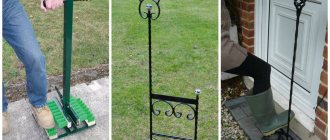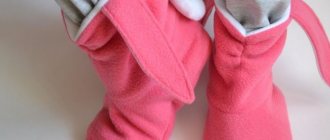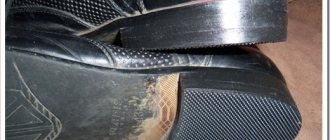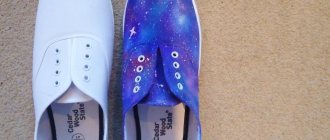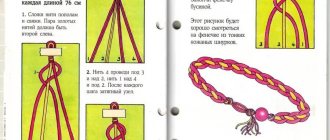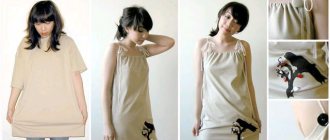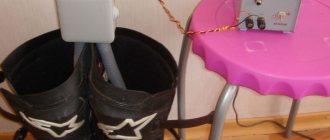DIY tire boot sole
Background (who cares about the process, just scroll below)
Back in 2005, my parents and I went on a trip to Nizhny Novgorod. Walking through the streets of this beautiful city, my old Chinese sneakers fell apart, so much so that I needed to immediately buy new ones. The closest store to us was the Adidas branded department, without much trying and choosing, we bought leather Adidas Original Sport sneakers for 3500 rubles, which by those standards was not little, since Chinese leather sneakers cost about 1200 rubles. I had already left the store wearing new shoes, and the old ones were placed in the trash bin closest to the store. In those teenage years, sneakers were everyday shoes for me; I wore them all year round, alternating with classic shoes. Usually my shoes last 3-4 years at most, and then they fall apart, but these sneakers turned out to be very durable. Of course, they gradually began to lose their appearance. The first couple of years I just walked in them and could run at most in physical education, and then I could play football. As we got older, sneakers moved into the category of those worn for walks in the woods and nature, and then they became shoes for carrying out renovations in my parents’ house. As soon as the renovations in the house were completed, my father almost threw them out, but remembered that they were mine and decided to return them to me so that I could dispose of them myself. I looked at them for several months and thought about what to do with them. The top was still able to walk through the forest or ride a bike, but I couldn’t look at the sole without tears. A little about the sole. When we bought the sneakers, the soles were silicone, soft and transparent with transverse notches. Now this silicone has hardened and turned into plastic and in some places has completely fallen off; the porous rubber base was still in good condition.
Article on the topic: What a shoe sales consultant should know
So I decided to replace this silicone with a tire.
The process of replacing the sole.
To begin with, we needed a tire that was worn almost to zero, but still intact and not old. I didn’t find one right away, either there’s a lot of tread, then the tires are winter, then they’re all cracking, or the wear is uneven. In general, after several days of leisurely searching, Barum Brillance R13 was found.
I cut off the sidewalls from the tire so that they would not interfere, made a transverse cut and began to slowly saw along lengthwise, bending the future sole.
Rubber sole for sneakers from a car tire to bookmarks 5
As a result of long-term or intensive use, high-quality sneakers can wear out in the sole area much faster than their upper part fails. For those who have such a problem, this master class will help. The rubber sole for the sneakers will be made from an old tire.
For this shoe update you will need:
- old tire or new (if there is only one and no one needs it);
- good glue for rubber (ideally professional glue for repairing tires);
- sharp knife;
- chalk;
- acetone;
- cotton wool or rag;
- the sneakers themselves.
Step 1
. Use a knife to cut off a piece of the tire. Cut off the central part. The length of the piece should be equal to the length of a pair of sneakers, the width should be the width of the widest part of the sole. Cut so that you are left with the top of the tire.
Step 2
. Degrease the sole of the sneakers and a piece of cut rubber by wiping it with a rag soaked in acetone. Don't forget to thoroughly wash your sneakers first.
Step 3
. Place a sneaker on the wrong side of a piece of tire and trace its outline with chalk. Do the same with the second copy.
Step 4
. Cut the tire into two parts. Lubricate each of them with glue.
Step 5
. Put on your sneakers and stand on the tire, trying to get into the previously marked contour. Stand for fifteen minutes without moving for better adhesion of materials. Afterwards, carefully remove your foot, press the sneakers down with a press and leave for the time specified in the instructions for the glue. Most often, the gluing time is 24 hours.
Article on the topic: Angelina com yua shoes
Step 6
. After the glue has dried, use a knife to cut off any excess.
With new, thick rubber soles, your sneakers are ready for continued wear.
The process of tucking shoes with old car spikes
Using pliers and a screwdriver, we pull out the required number of steel spikes, the so-called, from the old tire. fungal planting.
Using a caliper we measure the diameter of the core, the cap and the length of the tenon. Based on these dimensions, we select the diameter of the drill and construction screws that we will need in further work.
We don’t need to invent anything, we just need to repeat the fungal planting, like in a wheel. To do this, we will drill holes and make grooves for the caps with a T-shaped cutter made from an ordinary construction screw, the diameters of the rod and cap, as well as the length, coincide with the corresponding dimensions of the tenons.
To do this, use a sharpening machine to remove the sides of the screw head to make it easier to insert the cutter into the drilled holes. After this, we sharpen the rest of the cap like a drill. To ensure a tighter fit of the tenons, we do not grind off the head cone and leave it as is.
The installation locations of the spikes on the soles of the boots are determined by the points of maximum load, which are the traces of the greatest wear.
To limit the drilling depth, we put nuts specially selected for the height on the drill, mounted in the drill chuck, and secure them with electrical tape.
We mark the positions of future holes for the studs according to the traces of maximum wear on the sole.
Using the markings, we drill holes of a fixed depth.
We install a homemade cutter in the drill and drill out holes to fit the tenon head.
To avoid damaging the mounting hole, insert and pull out the cutter, tilting the drill away from the drilling axis. We install the spikes into the prepared sockets mainly using curved pliers.
The spikes on the sole look aesthetically pleasing.
The slight protrusion of the solid core and the elastic fit of the spike itself ensure safe movement on granite, metal and other surfaces, and even on ice.
Rubber sole for sneakers from a car tire to bookmarks 5
As a result of long-term or intensive use, high-quality sneakers can wear out in the sole area much faster than their upper part fails. For those who have such a problem, this master class will help. The rubber sole for the sneakers will be made from an old tire. For this shoe update you will need:
- old tire or new (if there is only one and no one needs it);
- good glue for rubber (ideally professional glue for repairing tires);
- sharp knife;
- chalk;
- acetone;
- cotton wool or rag;
- the sneakers themselves.
. Use a knife to cut off a piece of the tire. Cut off the central part. The length of the piece should be equal to the length of a pair of sneakers, the width should be the width of the widest part of the sole. Cut so that you are left with the top of the tire.
. Degrease the sole of the sneakers and a piece of cut rubber by wiping it with a rag soaked in acetone. Don't forget to thoroughly wash your sneakers first.
. Place a sneaker on the wrong side of a piece of tire and trace its outline with chalk. Do the same with the second copy.
. Cut the tire into two parts. Lubricate each of them with glue.
. Put on your sneakers and stand on the tire, trying to get into the previously marked contour. Stand for fifteen minutes without moving for better adhesion of materials. Afterwards, carefully remove your foot, press the sneakers down with a press and leave for the time specified in the instructions for the glue. Most often, the gluing time is 24 hours.
Main stages of work
At the next stage, the master applies glue to the prepared rubber surface and to the sole.
Glue the sneakers to the rubber strip and press them with something heavy.
After the glue has dried, all that remains is to trim off the excess rubber with a knife.
Details on how to make a shoe sole from an old car tire can be seen in the author's video.
adidas x Parley
Parley for the Oceans is an organization dedicated to saving the oceans from plastic pollution. The movement's ideologists not only collect plastic from the ocean coasts and talk about its harmful effects on marine ecosystems, but also collaborate with fashion brands - from small niche projects to adidas and Stella McCartney, turning waste into great things.
Article on the topic: Brown leather jacket what shoes
adidas x Parley
At one time, the joint adidas collection with Parley for the Oceans was a bold experiment: just think, sneakers made from ocean trash! But it quickly grew into a permanent collaboration, and now the collaborative line is regularly replenished. The plastic trash that Parley volunteers collect from coastlines around the world or in seaside cities before it ends up in the ocean is processed into fibers that are woven into fabric for the uppers of sneakers, sports T-shirts and swimsuits.
From time to time, in collaboration with Parley, the sports giant releases either classic or new models of sneakers - if you want a new product in an environmentally friendly version, do not miss the moment.
Business idea No. 5850. Shoes made from car tires
What benefits can you get from old car tires besides creating swans and flower beds? African craftsmen also make shoes from used tires, which are sold to the local population and tourists.
Many people know that car tires are often used as flower beds, garden figures and even pieces of furniture. In Africa, craftsmen also make shoes from used tires. Thanks to the high strength of the material, sandals made from tires do not wear out for up to 10 years: they do not fall apart, do not wear out, and do not get wet. You can buy them for almost nothing at a price of 2-3 dollars, which makes them popular among the local poor population. The technology is quite simple, if not primitive. From found ownerless tires, Africans cut blanks for soles, which are then added with straps and ropes for attaching to the legs. The smooth inner side of the rubber adheres to the heel, and the tread to the ground.
You can find similar shoes in many African tribes. But most of all, the Kenyan Maasai tribe became famous in this craft. Shoes made from tires have even become one of the country's attractions and are successfully sold to tourists as souvenirs.
Some entrepreneurs based on Maasai technology have created entire production facilities aimed at European buyers. An example is the Maasai Trends online store. The shoes of this company are made by the same craftsmen, but the quality of the products is higher. For example, almost new tires, leather and good quality denim are used in production. In a word, the slippers are much better than the creations of artisans for the Kenyans themselves. And such slippers cost an order of magnitude higher. If you believe the prices listed in the online store, children's sandals will cost $12, men's and women's sandals will cost up to $19.
Article on the topic: How to say shoes in Spanish
You can make 4 pairs of sandals from one old car tire. Finding a tire from a truck promises much greater profit - up to a dozen pairs of shoes will come out of it. The actual production process usually begins with a search. Sometimes it comes down to theft: it’s not for nothing that tourists from Europe and America are advised to take a closer look at the safety of their wheels and spare tire. True, lately local businessmen have no time for theft. Sales are gradually falling as equally cheap but more convenient Chinese products penetrate the market. After the material is obtained, the African artisan arms himself with an awl and a hammer and gets to work.
The Portuguese brand Fair is called that for a reason - it is both a story about honesty and an abbreviation for For All Its Rights. The creator of the brand, Karina Boavida, closely monitors ethical and environmentally friendly production. All shoes are made in factories where good working conditions are observed. The materials used are hypoallergenic microfiber certified according to the Oeko-Tex standard. That is, despite its artificial origin, it does not contain PVC, formaldehyde and other additives that can harm health and the environment. Plus, all Fair shoes are vegan.
Making sneakers from tires
1) Get a pair of old sneakers that fit you well. Cut a sheet of aluminum foil long enough and wide enough to wrap around the entire length of one shoe. Wrap the aluminum foil around the shoe so that the 2 ends meet at the heel and the sole is completely wrapped.
2) Take a marker and use it to trace the outline of the top of the shoe sole onto the aluminum foil. Then turn the shoe over and continue drawing a line on the foil until it closes. Also outline the upper part of the sneakers, not forgetting about the recess for the tongue.
3) Cut the foil along the lines you drew. Attach the trace cut out of foil and trace a “template” around it with a fabric marker. Do the same to create a second trace. Don’t forget to also draw another outline next to each of the footprints, one centimeter from the previous outline. Only then cut out both traces.
4) Now take the top part of the foil, cut it along the contour and unfold it so that it does not tear. Place it on the fabric and carefully trace the outline with a marker. Here, too, adhere to the tactic that you will need to draw another circuit for the firmware. Cut out fabric blanks.
5) You will also need to cut out the tongue for the shoe from the fabric. It should be about 10 centimeters wide and 18 centimeters long. As a last resort, you can then shorten it later when you need to sew it to the shoe. Sew along the edges of the fabric that will be visible when the shoes are completely finished. To do this, wrap about 5 centimeters of fabric and sew it using a machine. This doesn't just apply to reeds.
6) Take the krengels (iron spacers) and secure them in the upper fabric part of the sneakers, 10 pieces for each (5 on each side), after making small holes. Use a hammer. These will be the holes for our laces. Attach the tongue with sewing pins to the inside of the shoe and adjust it the way you want it to look.
Using different colored fabrics to cut out shapes to decorate your shoes. Then sew them all the way around the edges of the top of the sneakers. You should get it as shown in the photo.
7) Now the blanks can be wrapped around the legs and secured with sewing pins so that nothing stings anywhere. But remember that at the moment the outer part of them should be inside. Take the laces and thread them through the holes, tying them off. This way you can see how the sneakers will fit on your feet.
 Remove the workpiece and lace it again. Turn the pieces inside out (that is, leave them the way you put them on). Now carefully secure the part that is responsible for the sole, and carefully sew everything together. Do the same for the second sneaker, sewing the blanks together.
Remove the workpiece and lace it again. Turn the pieces inside out (that is, leave them the way you put them on). Now carefully secure the part that is responsible for the sole, and carefully sew everything together. Do the same for the second sneaker, sewing the blanks together.
9) Remember that you need to stitch along the black marker line that you applied to the fabric. Be sure to leave a little extra space around the toe of the shoe. It will probably tighten up as you glue the sole. Turn the shoes inside out so that the right side remains on top.
10) Put your shoes on your feet to make sure they fit well. Turn it inside out again, and go over the second seam again to strengthen the stitching. You can also make some adjustments at any point and trim excess fabric to ensure the shoe fits comfortably.
10.04.2014 481157
“What is the difference between TPE and EVA? What does tunit promise me? PVC is glue? What are the soles of these boots even made of?” — the modern buyer wants to know everything. In order not to lose face in front of him and be able to explain whether such a sole is suitable for him, carefully study this article. In it, process engineer Igor Okorokov explains what materials shoe soles are made of and what is good about each of them.
— engineer-technologist of shoe production, graduate of Vitebsk State Technological University of Light Industry. Since 2002, he has been working as a specialist for various shoe companies in Russia.
Materials used to make soles
The sole is one of the most important parts of the shoe, which protects it from wear and largely determines its service life. It is the sole that is subjected to intense mechanical stress, abrasion on the ground and repeated deformations. Therefore, the materials used to make soles must be as resistant to environmental influences as possible. In this article I will tell you what materials a sole can be made from and what the advantages and disadvantages of each of them are.
Sole attachment methods
There are two main methods of attaching the sole: adhesive and injection. But contrary to popular belief, fastening technology does not in any way affect the consumer properties of shoes. The adhesive method is used for classic and dress weekend shoes, most often with leather or tunit soles. In the manufacture of comfortable shoes for everyday wear, the injection molding method is most often used.
Soles made of different materials have different fastening methods. Polyurethane soles are most often made by direct casting, but in rare cases a pre-molded sole is glued to the upper. TPU soles are produced by high temperature injection molding. Heels are also made from thermopolyurethane. The TPE bottom is injection molded and then glued. PVC soles are most often attached using the injection molding method in the manufacture of footwear for outdoor activities and everyday wear. EVA soles are attached to the upper of the shoe only by injection, while tunit and leather soles are attached only by adhesive. For TPR, both options can be used.
Polyurethane (PU) soles
Advantages:
Polyurethane has good performance properties: it weighs little because it has a porous structure, has good abrasion resistance, is flexible, has excellent shock absorption and good thermal insulation. The soles made of polyurethane are light and flexible, therefore they are used in shoes where these characteristics are of particular importance.
Flaws:
The porous structure of polyurethane is also a kind of flip side of the coin. For example, because of it, polyurethane soles have poor grip on snow and ice, so winter shoes with PU soles slip a lot. Another disadvantage is the high density of the material and loss of elasticity at low (from -20 degrees) temperatures. The consequence of this is fractures in the places where the sole bends, the speed of which depends on the characteristics of the use of the shoe, in particular, on the person’s gait, the degree of his mobility and other factors.
Thermo polyurethane (TPU) soles
Advantages:
Thermopolyurethane has a fairly high density, so it can be used to make soles with deep tread that provide excellent traction. Another advantage of TPU is its high wear resistance and resistance to deformation, including cuts and punctures.
Flaws:
The high density of thermopolyurethane is at the same time its disadvantage, because because of this the weight of the thermopolyurethane sole is quite large, and the elasticity and thermal insulation leave much to be desired. To improve these characteristics, TPU is often combined with polyurethane, thereby reducing the weight of the sole, increasing its thermal insulation and elasticity. This method is called two-composition casting, and it is quite simple to recognize: the sole made using this technology consists of two layers, and the top layer is made of polyurethane (PU), and the bottom one, in contact with the ground, is made of thermopolyurethane.
Thermoplastic elastomer soles (TEP, TRP)
Advantages:
This material can be considered all-season. It is durable, elastic, resistant to frost and wear. TEP provides good shock absorption and traction. Thanks to the technology of manufacturing the sole from TPR, its outer layer is monolithic, which provides it with strength, and the inner volume is porous, retaining heat. Thermoplastic elastomer can be recycled, which means that its use in soles saves resources and does not pollute the environment.
Flaws:
At high and very low temperatures (over 50 degrees and below -45 degrees), TPE loses its properties, so it is used only in everyday shoes and, by the way, is rarely used for safety shoes.
Soles made of polyvinyl chloride (PVC, PVC)
Advantages:
PVC soles resist abrasion well, are resistant to aggressive environments and are easy to manufacture. They are often used in household and children's shoes, and previously they were especially widely used for safety shoes, since when mixed with rubber, PVC acquires properties such as oil and gasoline resistance.
Flaws:
PVC is used only in the production of casual shoes for autumn or spring, because this material has a large mass and low frost resistance, and cannot withstand temperatures below -20 degrees. In addition, PVC soles do not attach well to leather shoe uppers, so quality leather shoes with PVC soles are difficult and expensive to produce.
Ethylene vinyl acetate (EVA) soles
Advantages:
EVA is a very lightweight material with good shock-absorbing properties. It is used mainly in children's, indoor, summer and beach shoes, and in sports shoes - in the form of inserts, because it is able to absorb and distribute shock loads.
Flaws:
Over time, EVA soles lose their shock-absorbing properties. This occurs because the pore walls break down and the entire mass of EVA becomes flatter and less elastic. Also, EVA is not suitable as a material for winter shoes, since this material is very slippery and not resistant to frost.
Thermoplastic rubber (TPR) soles
Thermoplastic rubber
- This is shoe rubber made from synthetic rubber, which is stronger than natural rubber, but no less elastic. However, modern technologies make it possible to increase its flexibility with the help of various additives.
Advantages:
Thermoplastic rubber has a low density and, accordingly, less weight than other materials. There are no through pores in it, so moisture does not pass through it. However, there are surface pores in TPR, and they provide high thermal protection. In addition, TPR, like other porous rubbers, is an elastic material that provides good shock-absorbing properties. Thanks to this characteristic, shoes with TPR soles relieve unnecessary stress on the legs and spine.
Flaws:
The low density of the material can be not only an advantage, but also a disadvantage. In the case of TPR, it leads to the fact that the sole made of this material does not have particularly outstanding heat-protective properties. In addition, in wet and frosty weather, the thermoplastic rubber sole slips a lot.
Leather soles
Advantages:
Leather soles are used in all types of shoes, including children's, home and dress shoes of all seasons. Shoes with leather soles look great and allow the foot to breathe, as it is a natural membrane.
Flaws:
When worn in wet weather, the leather sole may become deformed, and caring for it requires the constant use of special sprays and impregnations. Leather has low wear resistance, so it is recommended to install preventive maintenance on leather soles, and it is mandatory for winter shoes, otherwise without it the sole will slide on ice and snow and deform even faster.
Tunit soles
Tunit
- This is rubber with the inclusion of leather fibers, so the second name for this material is “leather fiber”.
Advantages:
In appearance, hardness and ductility, tunit soles are similar to leather ones, but they behave better in use: they hardly wear out or get wet. These soles are easy to apply texture to, which gives them a little more grip than leather.
Flaws:
But even despite this, shoes with tunit soles are very slippery due to the high rigidity of the material. Therefore, tunit is used in the manufacture of only summer and spring-autumn shoes using the adhesive fastening method.
Wood soles
Advantages:
Wood is an environmentally friendly and very hygienic material, and wooden soles have an original appearance. However, recently, instead of wood, plywood is more often used to make shoes. It can be made from birch, oak, beech or linden wood and as a material it is easier to machine, is easy to shape and is inexpensive. Soles using cork material are also popular. When dealing with them, you need to understand that balsa wood, due to its natural softness, cannot serve as the main material for making soles, so cork is used only for decorative covering.
Flaws:
Wooden soles are hard, wear out quickly and have poor water resistance. A lot of material is consumed in the manufacture of such soles. Cork coverings are susceptible to chips and defects due to the softness of the material.
“What is the difference between TPE and EVA? What does tunit promise me? PVC is glue? What are the soles of these boots even made of?” — the modern buyer wants to know everything. So as not to lose face in front of him and...
Shoes Report Editorial Board
There may be many reasons why you might be left without shoes in field or hiking conditions far from populated areas. Here’s an option: the shoes were left to dry by the fire, but you weren’t careful and they were partially burned. Another option: Your dog, playing with a shoe on the bank of a mountain stream, accidentally dropped it, and the shoe quickly floated downstream. The dog liked this dynamic scene and repeated the procedure with the second shoe.
Osklen
Osklen's motto is As Sustainable As Possible, As Soon As Possible (“as sustainable as possible and as soon as possible”). The founder of the brand is Brazilian entrepreneur Oscar Metsavat, who also develops the Instituto-E foundation. This organization develops new fabrics in Brazil, and all of them, of course, are tested directly in the Osklen collections.
Osklen
In clothes and shoes, the brand uses organic silk and jute, recycled cotton and polyester, and even fish skin. The skin of salmon and Amazonian arapaima perfectly replaces ordinary leather and, moreover, does not require processing with dangerous chemicals.
At Osklen, you should look for comfortable slip-ons and low-top sneakers, and choose from unusual textures: for example, arapaima resembles crocodile skin, but itself is much softer, and salmon skin is more like snake skin. Canvas sneakers made from jute and other plant fibers are not dyed, so they retain their natural beige shade.
Article on the topic: How orthopedic shoes should fit on the foot
Midorikawa Ryo
At the Pitti Uomo men's fashion show in January, several Japanese designers showed the Japanese White Leather Project, dedicated to the traditional skin whitening technique that has been practiced in the Himeji region for more than a thousand years. In order to achieve a subtle milky shade, the skin is soaked in water from the Ichikawa River, then rubbed with salt and rapeseed oil, crushed and dried in the sun.
Midorikawa Ryo
Designer Rio Midorikawa also took part in the project with his personal brand. In addition to traditional techniques, he also works with new developments, including recycled leather. His shoes are unusual in the Japanese style, with complex details, asymmetrical seams, lacing and slits. To get yourself such a pair, however, you will have to make some efforts: for now, Midorikawa Ryo items can only be found in Japanese online stores.
Matt & Nat
The Canadian brand Matt & Nat (the name is not a name, but an abbreviation for materials and nature) has been around for more than 20 years. From the very beginning, the creators set themselves the task of producing a product from nature-friendly materials and continue to experiment with them: recycled nylon and rubber, cardboard, cork - just a few of them. Since 2007, all the polyester in the brand's products has been made from recycled plastic bottles, and a recent innovation is the use of old bicycle tires to create soles.
Matt & Nat
Matt & Nat mainly produces bags and other accessories. Their shoe line is quite small, but notable: there are slip-ons of an unusual cut, Chelsea boots with tractor soles, minimalist sneakers and even flip-flops. If you find yourself in Canada, visit one of the brand's stores live. Or order on the website - they deliver all over the world.
Sustainable veterans Veja have been making their minimalist sneakers since 2005. The arsenal includes the entire range of modern eco-friendly materials: there is organic cotton, leather dyed only with plant pigments, and waterproof fabric made from recycled plastic bottles. The soles are made from natural rubber collected from the Amazon forests. This approach allows us to support the local population, preserve traditional crafts and protect forests from deforestation.
Article on the topic: What shoes to wear cardigans with
Veja's assortment includes laconic white sneakers, running variations with colored inserts, sneakers in basic colors, as well as collections released in collaboration with like-minded brands. Now, for example, on the site you can find a collaboration with Lemaire: pairs reminiscent of diving shoes (made of recycled polyester!), and high-top sneakers - beige and lingonberry colors. The easiest way is to order directly on the website - the brand has international delivery.
Bourgeois Boheme
Another Portuguese on the list, Bourgeois Boheme, is extremely meticulous in its shoe production. Each pair has its own materials: the sole is made from recycled rubber with the addition of plant fibers, the inner insole is made from cork, and the lining and upper are made from plant-based polymers. One of Bourgeois Boheme's interesting finds is pinatex: a leather-like material made from fibers in pineapple leaves. Another development is EcoStone, a material made from ground limestone that is used to strengthen heels and parts of boots that are most likely to wear out.
Bourgeois Boheme
Bourgeois Boheme has a complete shoe wardrobe - the brand produces everything from classic oxfords, loafers and monks to sandals, sneakers and trekking boots.
How the life of villagers changed after the opening of the factory
It’s interesting that the factory’s employees were the same neighbors who once laughed at the guy’s idea. Now the village treats him with great respect. Thanks to Malcolm's hard work and perseverance, almost the entire village began to live much better.
Homemade sandals from a tire and tube
You can make very original sandals with your own hands at home. I think everyone has a couple of unnecessary tires from a car or motorcycle.
Necessary materials and tools: - Tire - Bicycle inner tube - Glue - Thick paper - Jigsaw - Drill - 1.2 cm chisel - Scissors - Ruler - Marker or pencil - Utility knife - Band saw
Detailed manufacturing description:
Step 1:
First you need to create a template. On thick paper we draw a diagram around our foot or suitable shoes. Then we make marks for the straps and cut out the template.
Step 2:
Choosing a tire. Spare tires or a motorcycle tire work well. We cut off the side with a jigsaw.
Step 3:
We make marks in the centers at the ends of each section. Also from the inside.
Article on the topic: What to do when you rub your shoes
Step 4:
Now we transfer the template. Place the template on the inside of the tire and trace along the outline.
Step 5:
We cut out the workpiece with a band saw.
Step 6:
Place the workpiece on the table and use a chisel to make a hole for the belts.
Step 7:
From a bicycle inner tube we cut out 12 straps with dimensions of 1.2x31 cm.
Step 8:
Using a screwdriver, install the belts into the grooves.
Step 9:
Next we fasten the belts. To do this, bend the sole and pour glue into the gaps.
Step 10:
Just wait until the glue dries.
How to make shoe studs using studs from an old car tire
In winter, when fresh snow covers icy streets and sidewalks, moving becomes difficult and at times even dangerous. To feel confident on the street at this time of year, it would be nice to stud the soles of your shoes like the wheels of a car. To do this, you can get by with waste materials and simple hand tools, and you don’t need any special qualifications.
Shoes with car tire soles
shoes that cannot be demolished
Now they have started making shoes so they buy them often. The sole is enough for a week. there is emptiness inside. and the upper is made of leather, durable. If anyone knows how to hem the sole themselves, it’s not a problem to replace it, but... again - the sole is also of low quality. Maximum time is 1 month. Once upon a time, back in Soviet times, we subscribed to the magazine Yu T (young technician) and there was one note about how a worn-out sole was replaced with rubber cut from a car tire. I remembered this when I came across a tire where there was no iron wire, but instead a nylon thread. Of course, I don’t walk around the city in those shoes, but I use them at work in the summer, and I put several outsoles so that my feet don’t get damaged by the rubber.
No duplicates found
Wow, here comes the middle class
Fuck it, I wouldn't even touch it with a stick...
homeless people, in my opinion, wear more decent shoes.
And what kind of shoes are you even taking, where do you find such crap? At our work, they give us regular work boots, some of the cheapest - about 900-1000 rubles. Personally, they last me exactly a year; by the end of the year, of course, they look a little weird (but not nearly as fucked up as yours), but nevertheless they don’t leak or fall apart. Unless the sole on the heel peels off occasionally, a tube of superglue solves the problem.
Yes, I work actively, in a day I can cover 10-12 km with my legs.
For everyday wear I bought Salomon sneakers and boots. Expensive, yes - boots almost 12, sneakers 8 thousand. But damn, my feet don’t sweat, don’t stink, the boots are equally comfortable at +10 and -20, they don’t get wet like the others... the boots are three years old, the sneakers are two years old - they look like new, there’s a small delamination of the double sole (the decor is more likely n not a working part) on the heel of one of the boots was eliminated in its infancy at the end of the second year of use with a drop of superglue..
Article on the topic: How to disinfect second-hand shoes
I would polish and scrub, but these are work shoes. There, fuel oil, grease, dust and dirt immediately stick. they are easy to clean with a rag.
Well, tell us what kind of boots are the cheapest for 1k year to wear at work? I want those too
Good shoes, as always, are free from these shortcomings.
No wonder there is a saying:
I'm not rich enough to buy cheap shoes.
But there is another wisdom - why buy 10 times more expensive when there is better and cheaper? what advice did you give it is not suitable for the job. Imagine I buy shoes for $1000, yes, they are of high quality, they will not wear out in 10 years. But . FOR WHAT ?? It's not smart to wear them to work.
I didn't mean to offend you. But those in the photo are no longer shoes. And if your job is such that in a month any protector is eaten up, then the craft makes sense, of course. But for some reason I am sure that all the other employees do not wear such shoes, and not at all because they cannot sew a tire instead of an insole.
Sometimes the top needs to be changed
